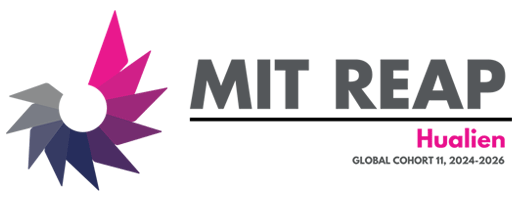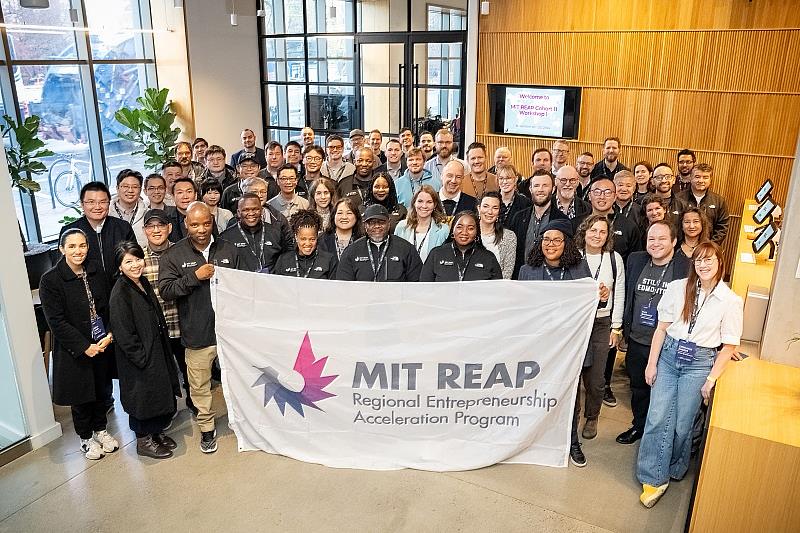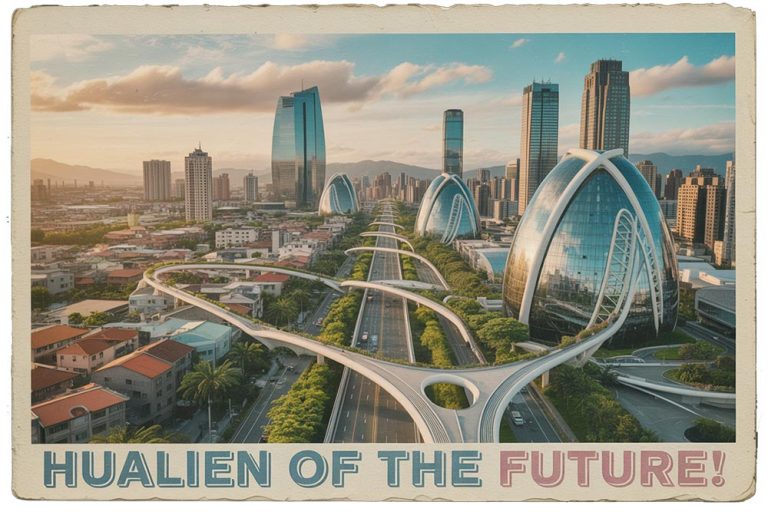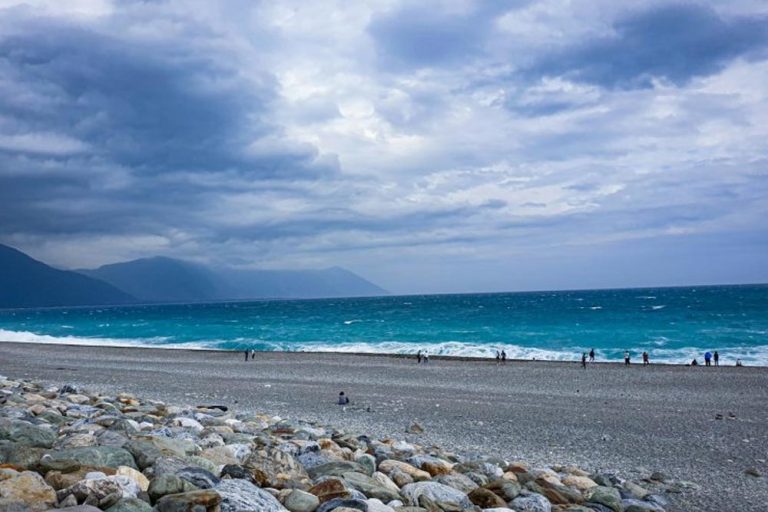Workshop 1 – Overview
Executive summary
MIT REAP
The MIT Regional Entrepreneurship Acceleration Program (REAP) is a global initiative that engages communities around the world to strengthen their innovation-driven entrepreneurial (IDE) ecosystems. In Hualien County, Taiwan, this two year program will be leveraged to foster long-term economic growth and transform the region towards sustainable development with a focus on the Wellbeing Economy.
Introduction
The introduction of MIT REAP in Hualien County marks a significant step towards enhancing the region’s entrepreneurial capabilities. This initiative is designed to bring together stakeholders from various sectors, including government, academia, and private enterprises, to create a collaborative environment conducive to innovation and economic development.
Key Objectives of MIT REAP in Hualien County
- Foster Collaboration: Enhance collaboration between all stakeholders in Hualien City: citizens, non-profits, academic institutions, government bodies, and private sector companies.
- Promote Innovation: Make Hualien an innovation driven city. Encourage the development and implementation of innovative solutions across sectors and industries.
- Strengthen Ecosystem: Build a robust innovation-driven entrepreneurial ecosystem that involves all major stakeholders and supports startups and small businesses.
- Be Open and Have Fun: If we’re having fun, that exuberance will spread. Make Hualien a place that people want to visit, move to, live start a business and become part of the community.
Expected Outcomes
- Economic Growth: Boost the local economy through increased entrepreneurial activities, job creation and net positive migration.
- Sustainable Development: Foster sustainable practices in government and industry to ensure long-term economic health.
- Enhanced Skills: Provide training and development opportunities to enhance the skills of the local workforce.
- A Vibrant Community: Increased quality of life and opportunity for citizens based on Wellbeing Economy principles.
Conclusion
The implementation of MIT REAP in Hualien County is poised to bring transformative changes to the region. By leveraging the collective strengths of various stakeholders, this initiative aims to create a thriving entrepreneurial environment that drives innovation, economic growth, and sustainable development.
Action is power
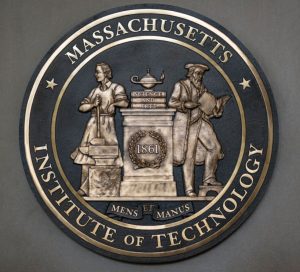
The seal of the Massachusetts Institute of Technology (MIT) represents the idea of“mens et manus,” which means “mind and hand.” This motto reflects the educational ideals of MIT which promotes above all, education for practical application. The seal represents both the sciences and the arts. One is not favored over the other; both of equal importance in the eyes of MIT.
MIT’s Regional Entrepreneurship Acceleration Program (REAP) is an example of this philosophy of “mind and hand,” or “theory and practice” as well as both “science and arts.”
SOW and REAP
In English, the word ‘reap’ means to harvest. Before one can harvest, one must ‘sow.’

This is the hidden cultural message in the name of the “REAP” program. A famous bible verse states, “As you sow, so shall you reap.” Now is the time for Hualien to sow.
Boulevard of Broken Dreams
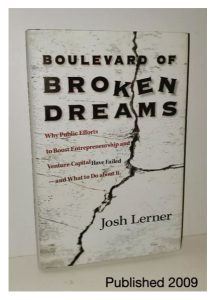
The REAP program is based in large part on research done by Josh Lerner, a Harvard Professor, who published a book in 2009 titled the Boulevard of Broken Dreams, which was published in 2009. Scott Stern calls this a “MUST READ BOOK.”
Many governments around the world, seeing the success of Silicon Valley, wish to recreate a local silicon Silicon Valley. But this is not as easy as it sounds. While there have been a few successful cases, the vast majority of such government programs to create “the next Silicon Valley” fail. Failure occur for a variety of reasons, but in general, there is no clear strategy or plan. Resources are spent on ineffective solutions, and there is no followup because there is no long term vision.
A key conclusion of the book is that “Government cannot dictate how markets evolve, and they must learn to balance the position as a catalyst with an awareness of their limited ability to stimulate the entrepreneurial sector.”
In other words governments are not magic. (As much as they like to believe they are.) Government cannot simply take a magic wand like Harry Potter and make a new Silicon Valley appear in their country.
Example: Singapore
The Singaporean government built an accelerator for startups but no one used it. Everyone was using the one that was created by the VCs.
Innovation Ecosystem Stakeholder Model.
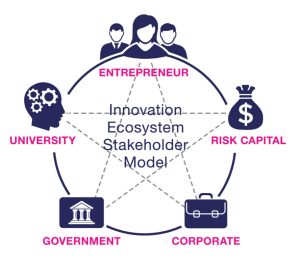
There are five primary stakeholders in the MIT REAP Innovation Ecosystem Stakeholder Model. All are vitally important, and it is difficult (if not impossible) for an ecosystem to succeed without all five.
In this model, the entrepreneur is at the top, because the entrepreneur is the most important driver of the innovation. The entrepreneur is the one with the ideas, the problem solving ability, and the drive to make change.
NO ONE IS IN CHARGE OF ENTREPRENEURSHIP
A government or corporation cannot force entrepreneurship to appear. Successful entrepreneurs are an emergent phenomenon that appear when the proper conditions are present.
The purpose of the model, and the other stakeholders, is to create the conditions in which the entrepreneur can emerge and thrive.
In addition to the Entrepreneur, other stakeholders include Universities/Research Institutes, the Government, Corporations, and Risk Capital.
One thing to note is that as citizens, we are all stakeholders. Which is to say, we all have an interest in the future of Hualien. We would all like to see it grow and thrive. That is what a stakeholder means: We have an interest. Some of us represent different categories.
MIT Theory of Change: REAP Framework
These are the three important components that are necessary to create an innovation ecosystem. Scott Stern says, “If you get these three things right, you can do just about anything.”
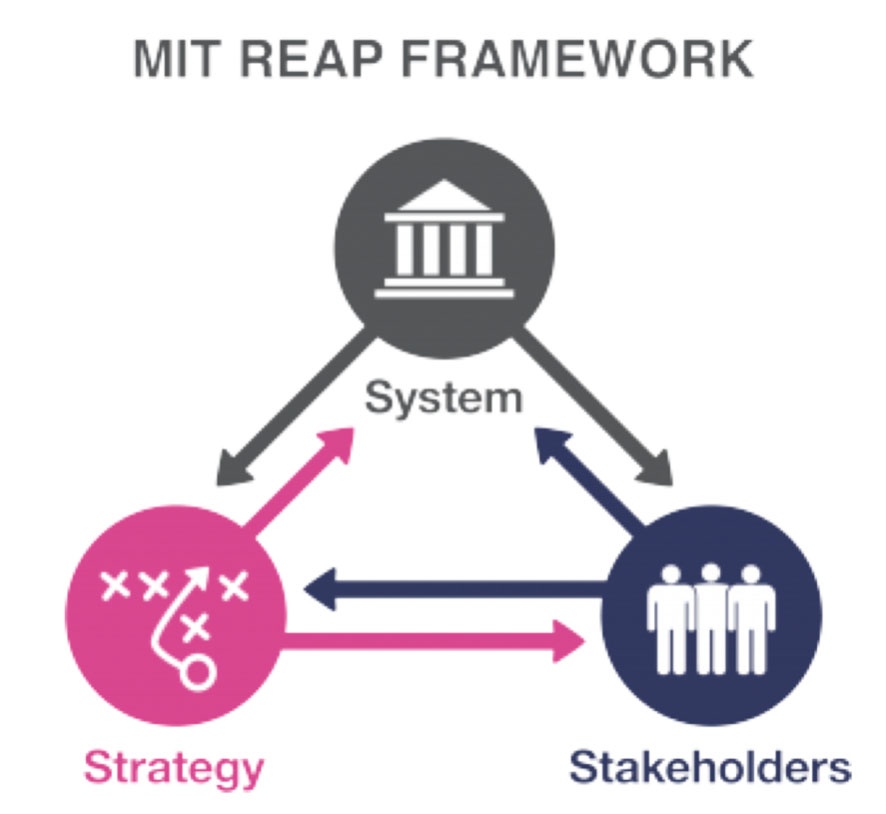
The first is the system.
The second are the stakeholders.
The third is the strategy.
These are the three pieces and getting them to work together is the hard part communication and action is the hardest part.
To apply the system to your region, you must:
UNDERSTAND THE LATENT STRENGTHS AND BOTTLENECKS OF YOUR REGION
CREATE STRATEGIC INTERVENTIONS in order to achieve the
STRATEGY SPECIFIC OUTCOMES you desire
Choose a MUST-WIN-BATTLE — We don’t have much time — 19-20 months. Graduation is June 2026.
What can we do that will want to make everyone get involved?? Are we doing the right things to get what we want done?
We’re looking for a new level of commitment for stakeholder engagement. How do we have to change to really get things done? This is not about business as usual.
Example: Monterrey Mexico. Monterrey focused on creating:
- Collaboration hubs
- Transparent communications
- Collisions between people
- Engaging mentors
- Open Investment
- Make the concept of IDEs a priority to Universities
Hualien Presentation Questions:
Fiona: What areas will you focus on to build IDEs? Areas of strength include: Wellbeing, Agriculture, Resilience. What natural strengths can you focus on to build IDEs?
Lars: The presentation mentioned overregulation. Regulation can also be helpful / an asset, if done right. How can regulation be changed to serve your region? How can it be used as a tool? How can you use it to favor certain industries?
Scott: How can you use the “Super Aged” population to your advantage? How can you unlock that potential, as well as the potential of your diaspora — i.e., all the people who have left Hualien, but still have a special place for it in their hearts?
SME vs. IDE.
The MIT REAP program places its focus on growing Innovation Driven Enterprises (IDE) rather than Small Medium Enterprises (SME), though the latter will certainly benefit from the overall growth of the ecosystem.
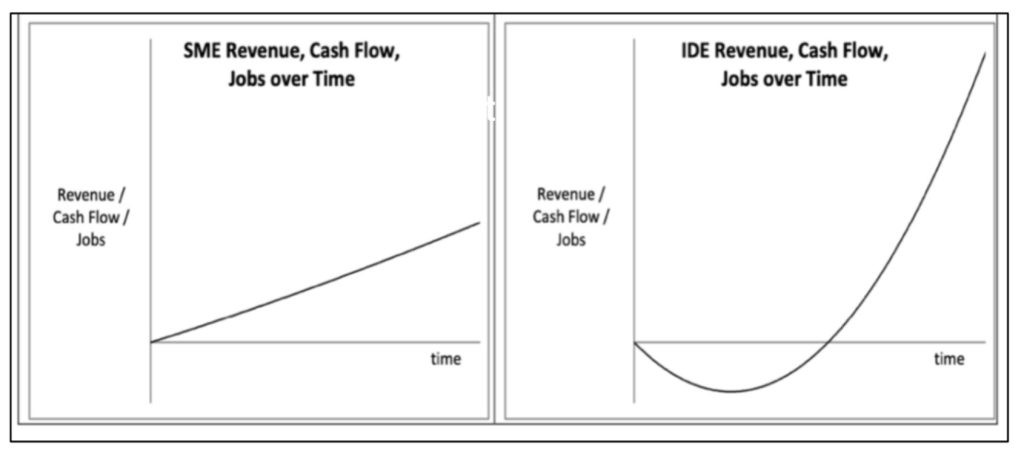
SMEs are companies that start small and will likely stay small. They are focused on local markets, e.g. cafés, restaurants and B&Bs. A successful SME can have positive cashflow and revenue that grows linearly over time, but there tends to be a ceiling to it.
By contrast, IDE has a global focus from the start, and from the very beginning they are focused on how to grow big and make a big impact. They are focused more on international markets. There is more money, more risk and more complexity in IDEs. Because IDEs are innovation driven, there is generally a period of negative cash flow and revenue as they invest before things take off exponentially over time.
Incentives drive outcomes
What outcome do you want? Create incentives to produce those outcomes. For example, university professors are motivated to get tenure. But the universities create the conditions (incentives) required to make tenure.
If the requirement is writing papers, professors will write more papers.
If the requirement is patents, professors will apply for more patents.
If the requirement is startup involvement, they’ll be involved in that.
This is what we mean by strategic interventions. The incentives that the universities set and create for professors are the policy-driven strategic interventions.
MIT puts a great emphasis on “Mens et Manus” — both mind and hand. Successful professors should be involved in creating patents and utilizing those patents in startups. This is part of the reason that MIT is so prolific in generating startups. Successful startups are the strategy specific outcomes of MIT’s consciously chosen incentives.
OUTCOMES ARE DRIVEN BY INCENTIVES!
OUTCOMES ARE DRIVEN BY INCENTIVES!
OUTCOMES ARE DRIVEN BY INCENTIVES!
For any policy, regulation, incentive, or restriction, always ask WHY?

Why this policy? Why this regulation? Why this restriction?
What are you trying to achieve? What are the intended consequences of this action? What are the unintended consequences of this action?ICAP vs. ECAP
MIT REAP distinguishes between Innovation Capability (I-CAP) and Entrepreneurial Capability (E-CAP) to highlight different aspects of an ecosystem that drive economic growth and competitiveness.
I-CAP (Innovation Capability):
• Focus: Developing new ideas, technologies, and processes.
• Components: Research institutions, universities, R&D departments, and a culture of creativity and experimentation.
• Outcome: Generation of innovative products, services, or processes.
• Importance: I-CAP is crucial for creating novel solutions and advancing knowledge. It lays the groundwork for new technologies that can be commercialized.
E-CAP (Entrepreneurial Capability):
• Focus: The ability to bring innovations to market effectively.
• Components: Entrepreneurs, investors, support networks, policies, and a culture of risk-taking and business acumen.
• Outcome: Successful commercialization of innovations, leading to new businesses, job creation, and economic growth.
• Importance: E-CAP is vital for translating innovations into viable businesses. It ensures that innovations have a pathway to impact the market and society.
Why the Distinction is Important:
• Balanced Ecosystem: A region needs both I-CAP and E-CAP to thrive. High innovation without entrepreneurship can lead to ideas that never reach the market. Strong entrepreneurship without innovation can lead to a saturated market with little differentiation.
• Strategic Development: Understanding this distinction helps regions identify gaps in their ecosystem. For instance, a region may have strong research institutions (high I-CAP) but lack the entrepreneurial infrastructure (low E-CAP) needed to commercialize innovations.
• Policy and Support: Tailoring strategies to enhance both capabilities can create a more robust ecosystem, leading to sustainable economic development and a competitive advantage.
Up to 5 SME jobs are created for each IDE job.
IDEs create new jobs, but also create demand for new SME jobs. For each IDE job created, expect 5x more SME jobs, e.g. waiters, grocery store clerks, dog walkers, personal trainers, etc.
Some IDEs have a deeper employment “stack” – I.e. Commonwealth Fusion has a very deep stack because it is really an engineering problem. The physics (supposedly) are done. Instagram had a much shallower stack — only 13 employees when purchased by FB for $1 billion USD.
In summary, I-CAP focuses on creating new knowledge and innovations, while E-CAP ensures these innovations are successfully brought to market. Both are essential for a thriving innovation ecosystem.
HUALIEN I-CAP
Hualien has two good universities which produces many STEM graduates each year, but generally they don’t stay in Hualien due to lack of opportunities. Like many places, Hualien suffers a brain drain. Students generally move to Taiwan’s west coast, where there are more job opportunities. But from a lifestyle perspective, it is highly industrial and polluted.
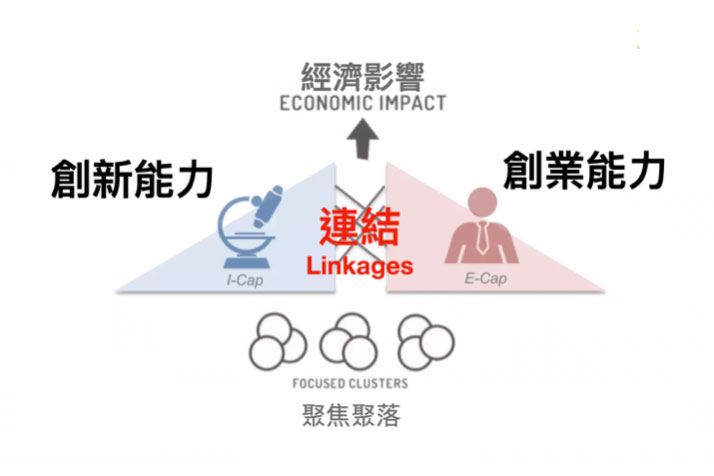
Hualien boasts the best air quality in Taiwan. That is priceless and irreplaceable. How can Hualien grow without sacrificing this or losing vital aspects of who we are?
THE IMPACT OF A SINGLE PERSON
One person can have a huge impact on and nearly single-handedly change the entire ecosystem:
e.g.
Brad Felder in Boulder, Colorado
Bill Gates (Microsoft) in Seattle
Howard Schultz (Starbucks) in Seattle
Jeff Bezos (Amazon) in Seattle
Towns in the same region should not compete against each other. In Hualien, we should think of how regions like Taipei, Hsinchu and Kaohsiung can benefit us and vice versa. How can we all work together to benefit each other and all of Taiwan? These are not our competitions. The real competition is between Hualien and Hunan, or Hualien and Houston.
Focus on your advantages.
e.g.
Nova Scotia has focused on its “Ocean Supercluster.” This is a natural competitive advantage. While it may not have a pure competitive advantage in biotech, it may achieve a competitive advantage in Ocean biotech.
Focus on something that is unique to your region. (Be yourself — everyone else is taken!)
– – –
An innovation ecosystem can have different districts. Ideas and IDEs grow and spread and overflow.
– – –
Saudi Arabia in Cohort 2 forgot the entrepreneur. They came back with a firecracker of a female entrepreneur who has since gone on to change the country in profound ways. As a woman entrepreneur, she has changed attitudes towards women, as well as towards entrepreneurship.
– – –
The job of maintaining an economic ecosystem is never done. Boston has lost its way many times.
Polaroid was a big company that was founded in Cambridge in the 1940s. It was a huge employer and a very innovative company. It was like “the Apple of its day.”
But Polaroid went into decline from competition with Kodak and their disposable cameras, and eventually went bankrupt
Boston lost its computing industry (Wang | DEC)
Cambridge NASA due to JFK assassination
Boston/Cambridge lost Shockley to Silicon Valley. This led to the birth of the semiconductor industry in Silicon Valley.
Regulation played a huge role in the rise of biotech in Boston / Cambridge
Boston/Cambridge is currently riding high on the Biotech wave. It is boom times again! The money that blankets the town is apparent in all the new buildings in Kendall Square. Will it last forever? History says no. This is a wave that also will pass.
MIT is a big beneficiary of the Military Industrial Complex – 20% of its funding comes from military research.
Once again: NO ONE IS IN CHARGE OF ENTREPRENEURSHIP!
MIT is mission driven, with a policy to encourage entrepreneurship. It takes an ecosystem, working together, ICAP, ECAP, and the linkages between them to create economic impact. We must focus on our COMPARATIVE ADVANTAGE.
And always ask: WHY.
WHY are we doing what we’re doing?
WHAT are we trying to achieve?
Globally, entrepreneurship is on the rise. It is easier to do, more acceptable from a society level, number of VCs has increased.
People should be given the proper incentives to encourage desired outcomes.
Startup Cartography project
The Startup Cartography Project leverages business registration records and predictive analytics to develop innovative metrics for assessing entrepreneurial quantity, quality, and performance at various geographic and temporal levels. The project introduces key statistics, including the Startup Formation Rate (SFR), Entrepreneurial Quality Index (EQI), Regional Entrepreneurship Cohort Potential Index (RECPI), and Regional Entrepreneurship Acceleration Index (REAI), to analyze and visualize entrepreneurial ecosystems.
Spanning 26 years of data across 49 states and Washington, DC, the project identifies trends and regional disparities in high-growth entrepreneurship. Findings highlight the critical role of entrepreneurial quality in economic growth and provide insights into how regions can better foster and scale high-potential startups. The interactive website offers tools for visualization, research, and data access, aiming to empower policymakers, researchers, and stakeholders to understand and enhance entrepreneurial ecosystems.
Content is available under a Creative Commons license, emphasizing collaboration and feedback.
Changing attitudes towards entrepreneurship:
A certain part of the Norway team took it upon themselves to become focused on changing the narrative around entrepreneurship in Norway. Norway is a very wealthy, stable country, so entrepreneurship is not looked upon so favorably. Like, “Why bother? Norway is so rich, and the sovereign wealth fund owns 2% of the world’s assets, so there is not a lot of drive for the entrepreneurship spirit.
THE ENGINE
“Tough Tech’s Hub in MA and beyond.”
Engine Accelerator is paired with Engine Ventures, to invest in promising startups.
—————
How to build a sustainable unicorn: Lessons from 150 Founders
Imran Sayeed + Nagarjuna Venna
Top 3 obstacles that stop companies from growing
- Personnel: How do you find the right person for the right stage of the company and cycle that person out for the next person.
- Pivot: How to do it and keep growing?
- Go to market strategies
Biggest obstacle:
In early years, finding product market fit
Focus on teams, not individuals
IF A GOVERNMENT SAYS THEY WANT TO ATTRACT STARTUPS, THEY BETTER MEAN IT!
GOVERNMENT NEEDS TO ELIMINATE RED TAPE, AND MAKE IT EASY FOR STARTUPS TO START A BUSINESS, RUN A BUSINESS AND BE SUCCESSFUL.
Governments should think of incentives to encourage startups, and also create incentives for government departments to buy from startups. Many governments have policies that make it difficult or impossible to buy from them.
